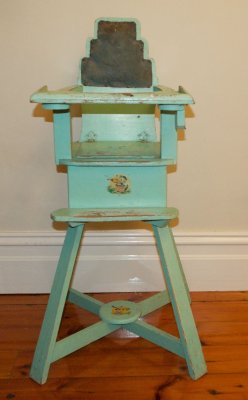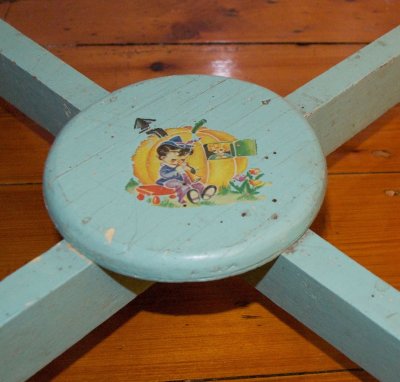tuppence
Practically Family
- Messages
- 532
- Location
- Hellbourne Australia
I did a quick google but couldn't find what I was after. I bought this cute highchair
 mostly to put an old composition doll in, but now I find I am going to be a grandmother in December, I'm considering making it child safe.
mostly to put an old composition doll in, but now I find I am going to be a grandmother in December, I'm considering making it child safe.
I have dated the decals on the highchair to a Little Golden Book http://web.eecs.umich.edu/~srs/Ken/GoldenBooks/139_1952.jpg printed in '53, so I could assume without even testing the paint is Lead. I am wondering if painting over the paint or sealing it with several coats of varnish will make it safe for a baby.
And just what is Your general opinion on whether I should keep the original patina, just varnish over, or repaint. I can get reproductions of the original decals used.
Thanks in advance.
 mostly to put an old composition doll in, but now I find I am going to be a grandmother in December, I'm considering making it child safe.
mostly to put an old composition doll in, but now I find I am going to be a grandmother in December, I'm considering making it child safe. I have dated the decals on the highchair to a Little Golden Book http://web.eecs.umich.edu/~srs/Ken/GoldenBooks/139_1952.jpg printed in '53, so I could assume without even testing the paint is Lead. I am wondering if painting over the paint or sealing it with several coats of varnish will make it safe for a baby.
And just what is Your general opinion on whether I should keep the original patina, just varnish over, or repaint. I can get reproductions of the original decals used.
Thanks in advance.



